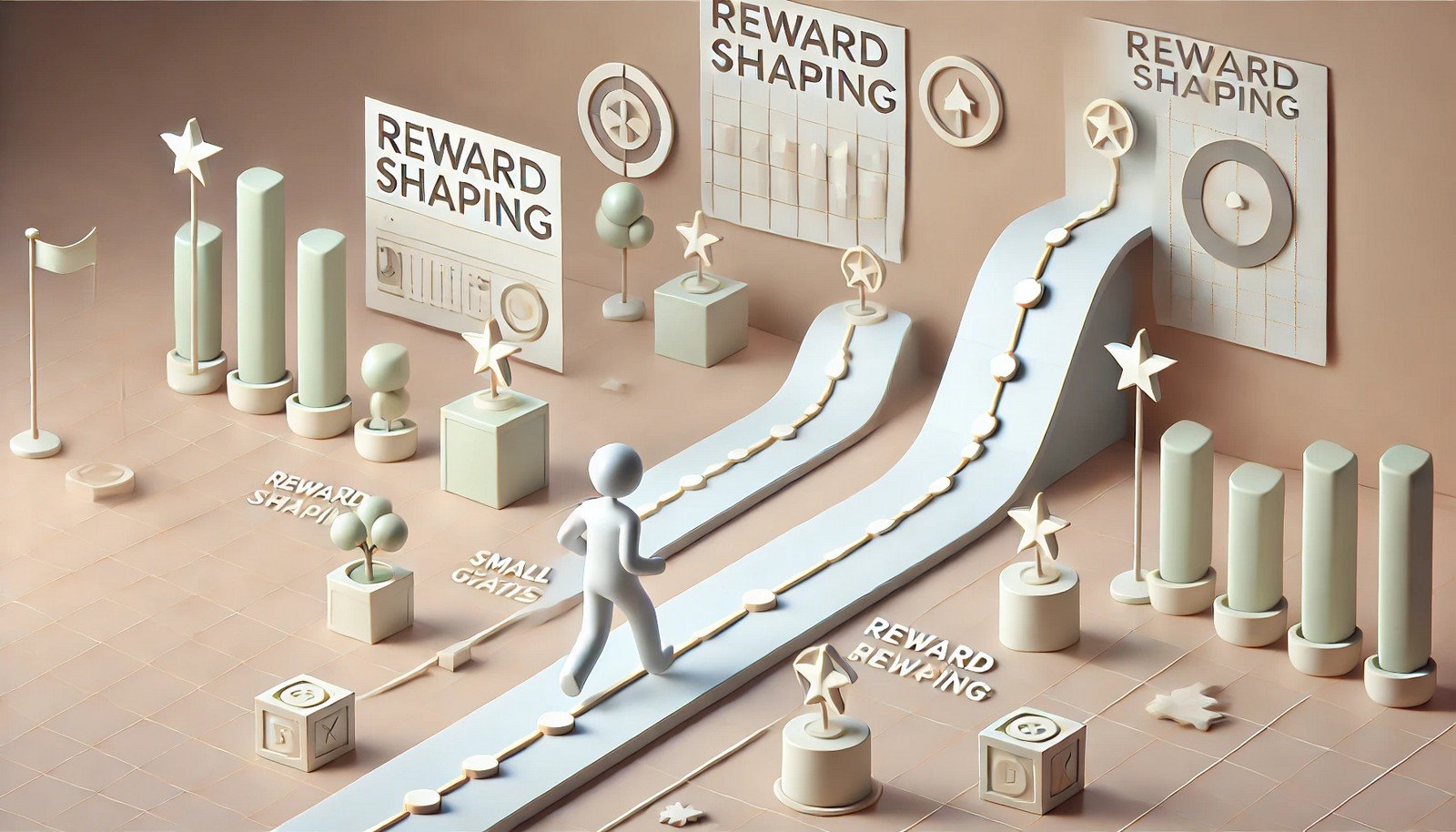Reward Shaping in AI

Quick Navigation:
- Reward Shaping Definition
- Reward Shaping Explained Easy
- Reward Shaping Origin
- Reward Shaping Etymology
- Reward Shaping Usage Trends
- Reward Shaping Usage
- Reward Shaping Examples in Context
- Reward Shaping FAQ
- Reward Shaping Related Words
Reward Shaping Definition
Reward shaping is a technique in reinforcement learning that adjusts the reward function to provide additional feedback signals to an agent. This adjustment helps guide the agent's learning process, encouraging desirable actions and accelerating the training process. By strategically structuring rewards, reward shaping aims to mitigate the challenges of sparse or delayed rewards, enhancing the model's learning efficiency. It’s often used to improve performance in complex tasks where an agent might otherwise struggle to achieve optimal behaviors due to minimal initial feedback.
Reward Shaping Explained Easy
Think of reward shaping like getting bonus points in a game. Instead of only getting points for finishing a level, you get extra points for doing things that bring you closer to the goal, like picking up helpful items along the way. Reward shaping helps the "AI player" find the best way to complete tasks by giving little hints or bonuses for making progress in the right direction.
Reward Shaping Origin
Reward shaping evolved as reinforcement learning grew in sophistication, particularly as researchers faced challenges with sparse reward signals in complex environments. Early exploration in the 1990s and 2000s, including in robotics and game simulations, highlighted the need for better reward mechanisms to guide agents more efficiently.
Reward Shaping Etymology
The term "reward shaping" comes from the concept of “shaping” or altering rewards in a way that aids the agent’s path toward learning the target behavior or policy.
Reward Shaping Usage Trends
Reward shaping has seen increased adoption in AI applications where reward signals are sparse or delayed, such as autonomous driving, robotics, and complex strategy games. Its role has expanded in tandem with advances in reinforcement learning algorithms, where shaping rewards can significantly speed up the convergence of learning processes, especially in high-dimensional environments.
Reward Shaping Usage
- Formal/Technical Tagging:
- Reinforcement Learning
- Machine Learning
- Reward Engineering - Typical Collocations:
- "reward shaping algorithm"
- "reward signal tuning"
- "reinforcement learning reward structure"
- "designing reward functions"
Reward Shaping Examples in Context
- In a robotics task, reward shaping helps a robot learn to avoid obstacles more quickly by rewarding it for maintaining safe distances.
- For an AI playing chess, reward shaping can provide extra points for strategic moves leading to a checkmate.
- In self-driving simulations, reward shaping is used to encourage smoother driving by rewarding gentle steering and braking actions.
Reward Shaping FAQ
- What is reward shaping?
Reward shaping is modifying the reward function in reinforcement learning to guide agent actions and improve training efficiency. - Why is reward shaping used in reinforcement learning?
It accelerates learning, helping agents learn optimal behaviors when feedback is sparse or delayed. - How does reward shaping impact AI training?
It provides incremental rewards for intermediate steps, leading to faster and often more effective learning. - Can reward shaping cause unintended behaviors?
Yes, poorly designed rewards may lead agents to exploit reward structures, resulting in suboptimal behaviors. - Is reward shaping commonly used in robotics?
Yes, especially in tasks with safety concerns, where shaped rewards help ensure safer interactions. - What are the challenges of reward shaping?
Defining effective shaped rewards can be complex, and poorly designed rewards may lead to unintended actions. - How is reward shaping applied in video games?
It rewards progress toward game objectives, helping AI agents learn strategies without direct instructions. - Can reward shaping improve decision-making in autonomous vehicles?
Yes, it encourages safe and efficient driving practices by rewarding smooth, responsible maneuvers. - What role does reward shaping play in AI research?
It's vital in developing robust learning algorithms that perform well in real-world scenarios. - Does reward shaping always improve learning speed?
Often, but not always; poorly crafted rewards may hinder learning or lead to undesirable behaviors.
Reward Shaping Related Words
- Categories/Topics:
- Reinforcement Learning
- Artificial Intelligence
- Reward Engineering
Did you know?
Reward shaping in reinforcement learning has made AI breakthroughs in gaming, where strategies to incentivize specific in-game actions have led to remarkable improvements in agent performance, notably in games like StarCraft and Dota 2. These AI systems learned complex, strategic behaviors by shaping rewards for intermediate milestones in each game.
PicDictionary.com is an online dictionary in pictures. If you have questions or suggestions, please reach out to us on WhatsApp or Twitter.Authors | Arjun Vishnu | @ArjunAndVishnu

I am Vishnu. I like AI, Linux, Single Board Computers, and Cloud Computing. I create the web & video content, and I also write for popular websites.
My younger brother, Arjun handles image & video editing. Together, we run a YouTube Channel that's focused on reviewing gadgets and explaining technology.



Comments powered by CComment